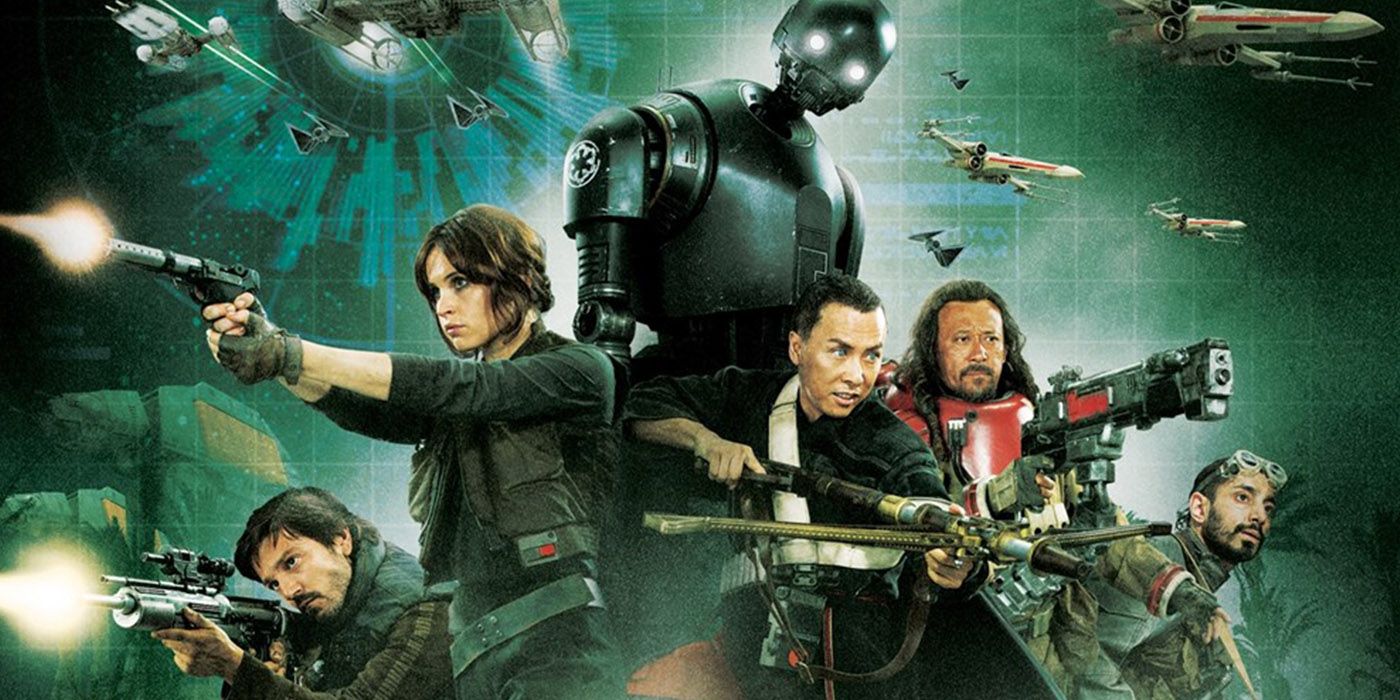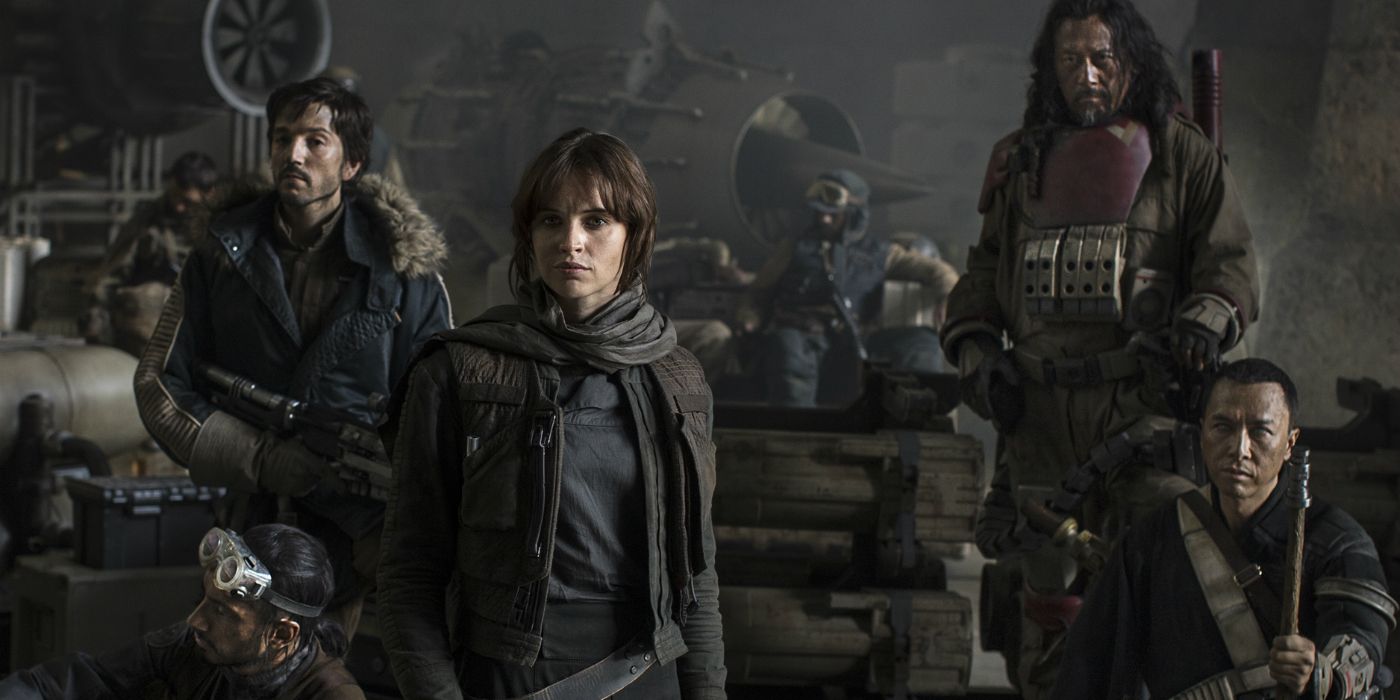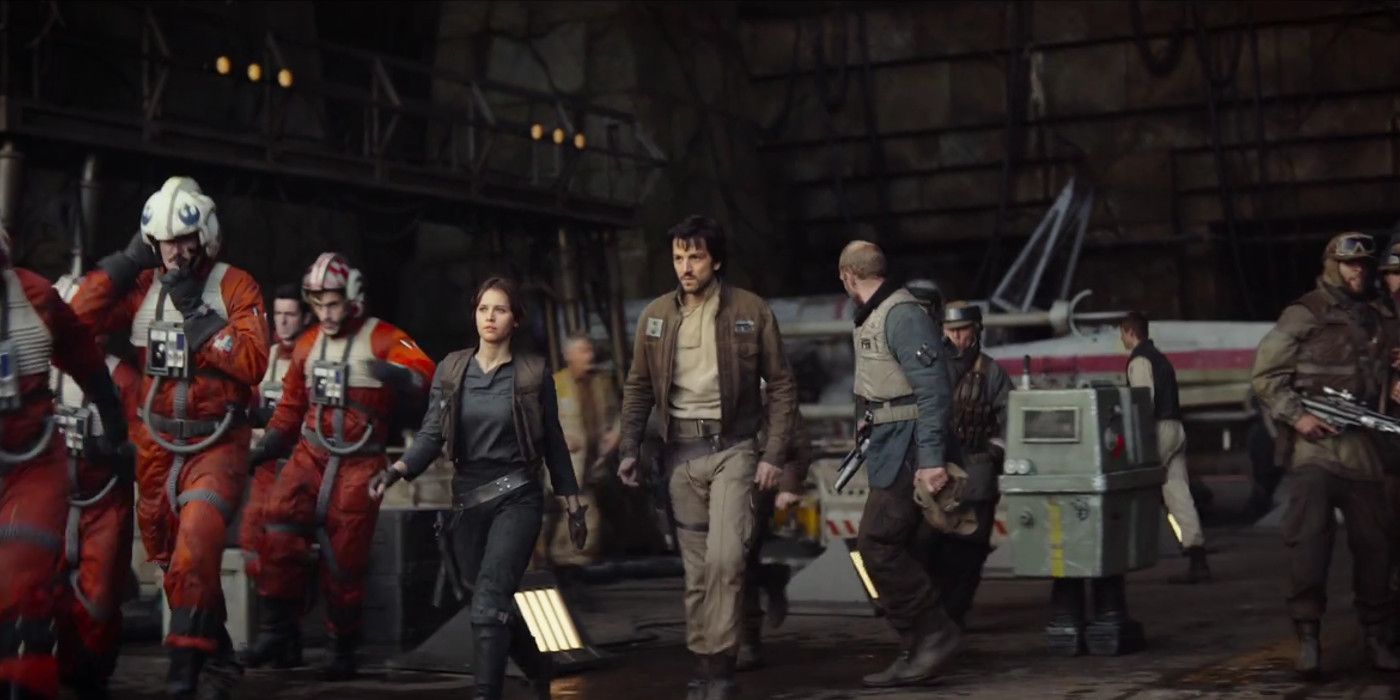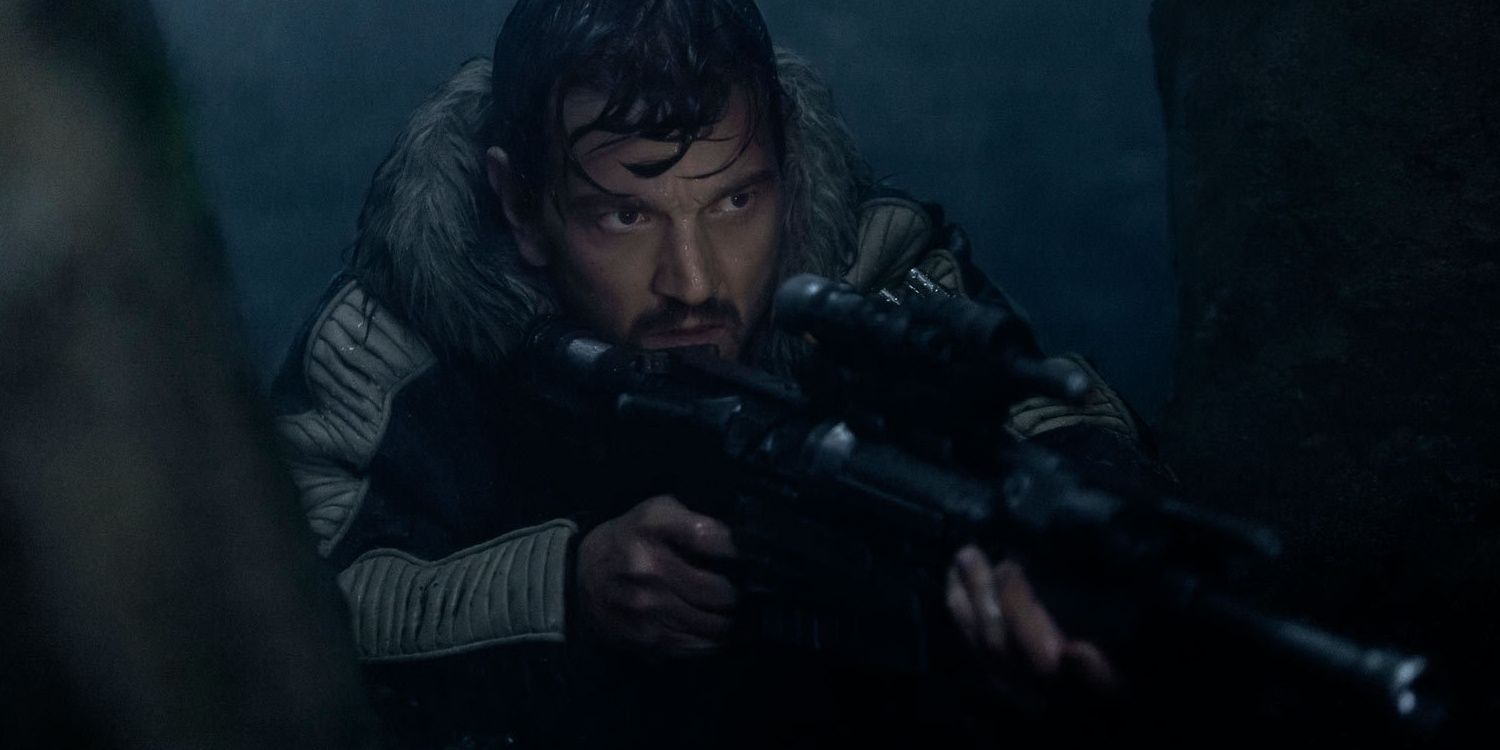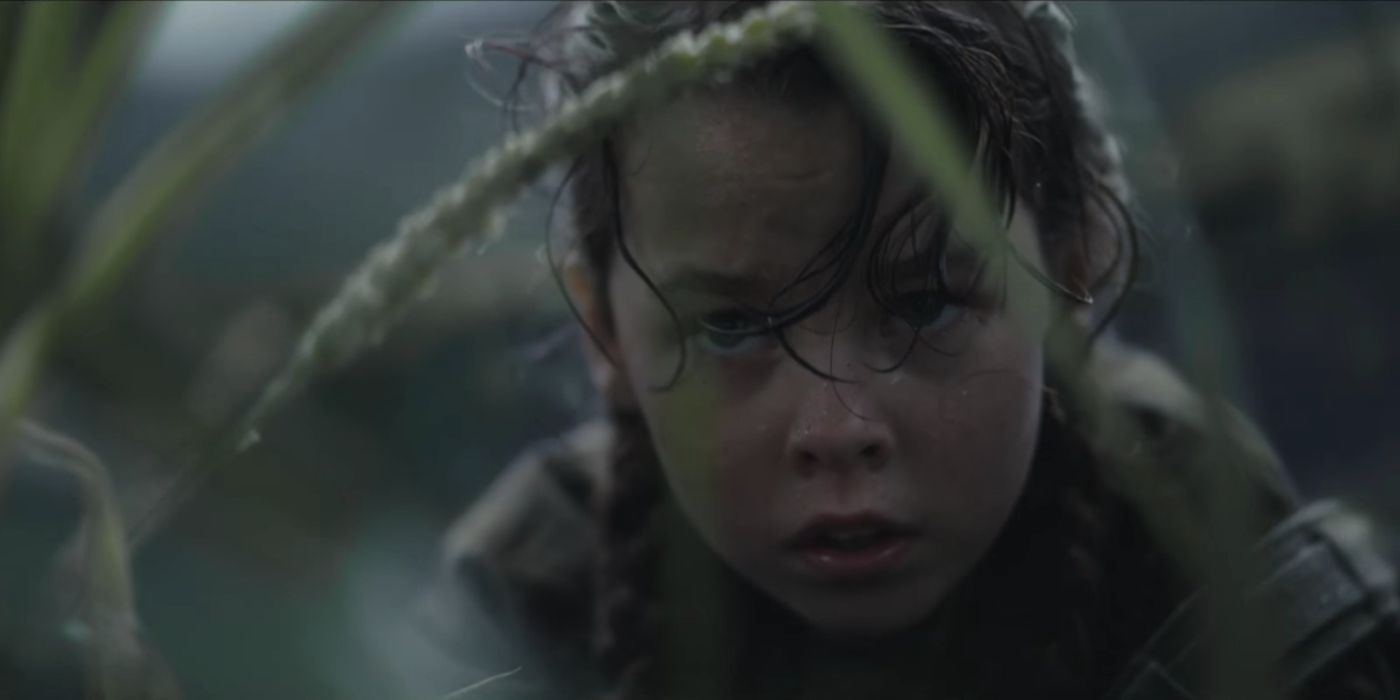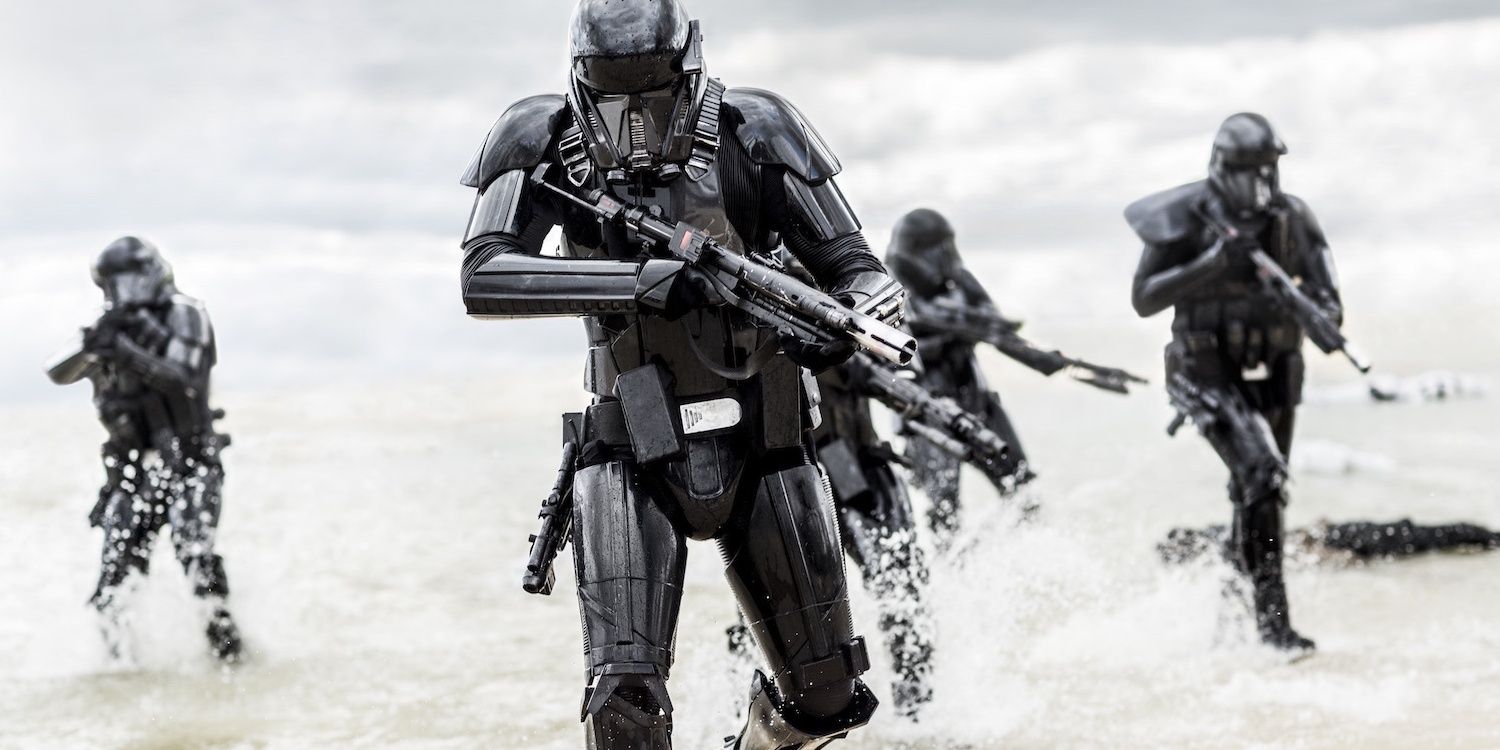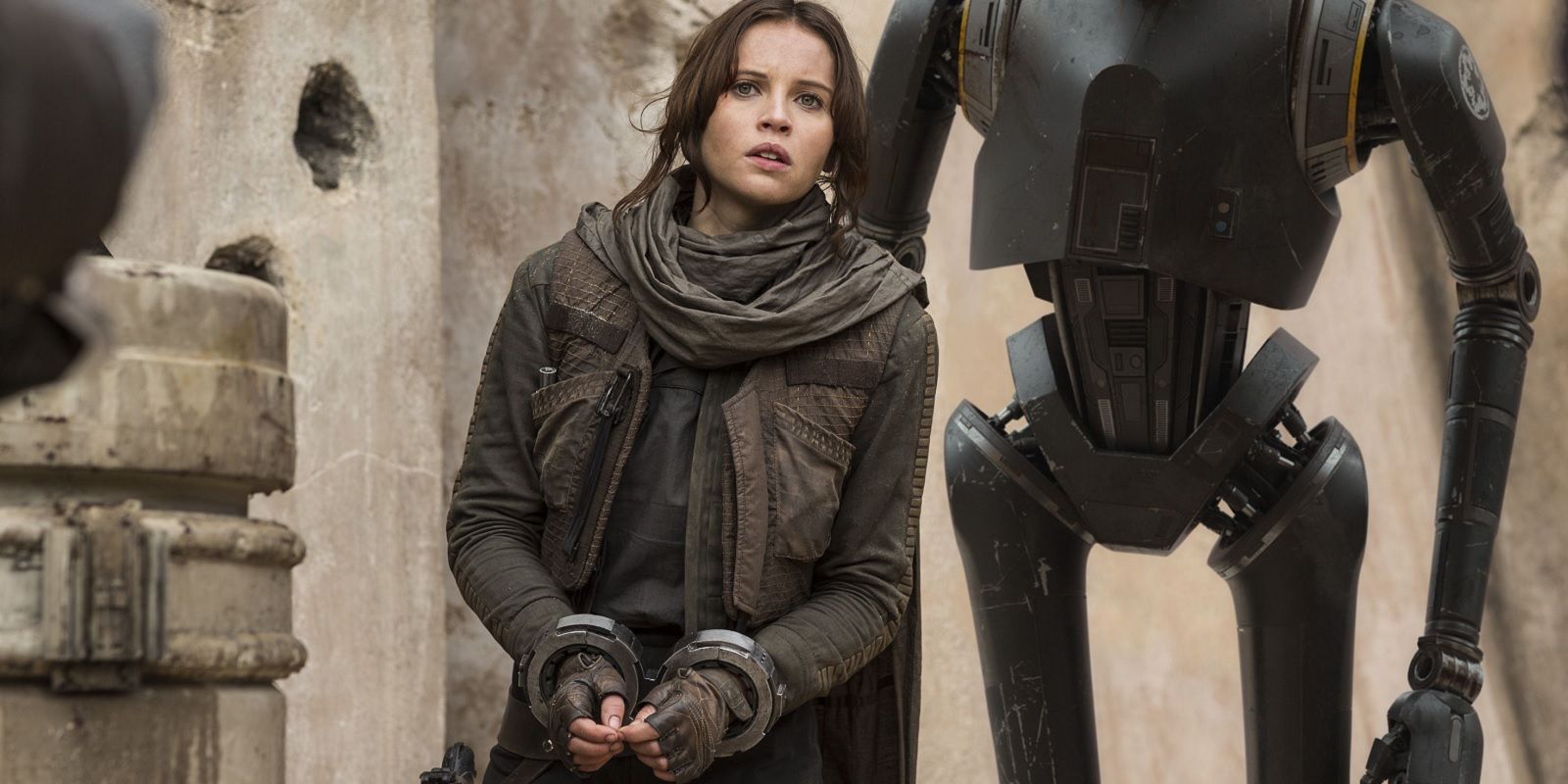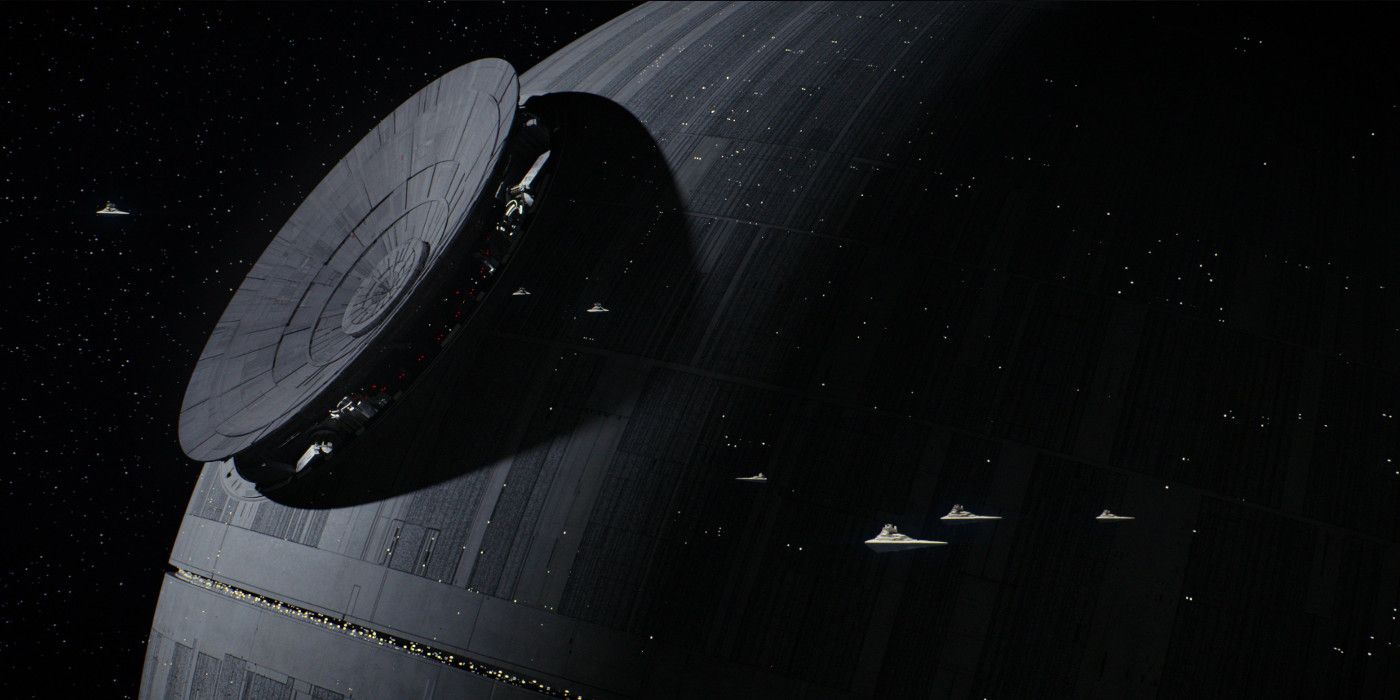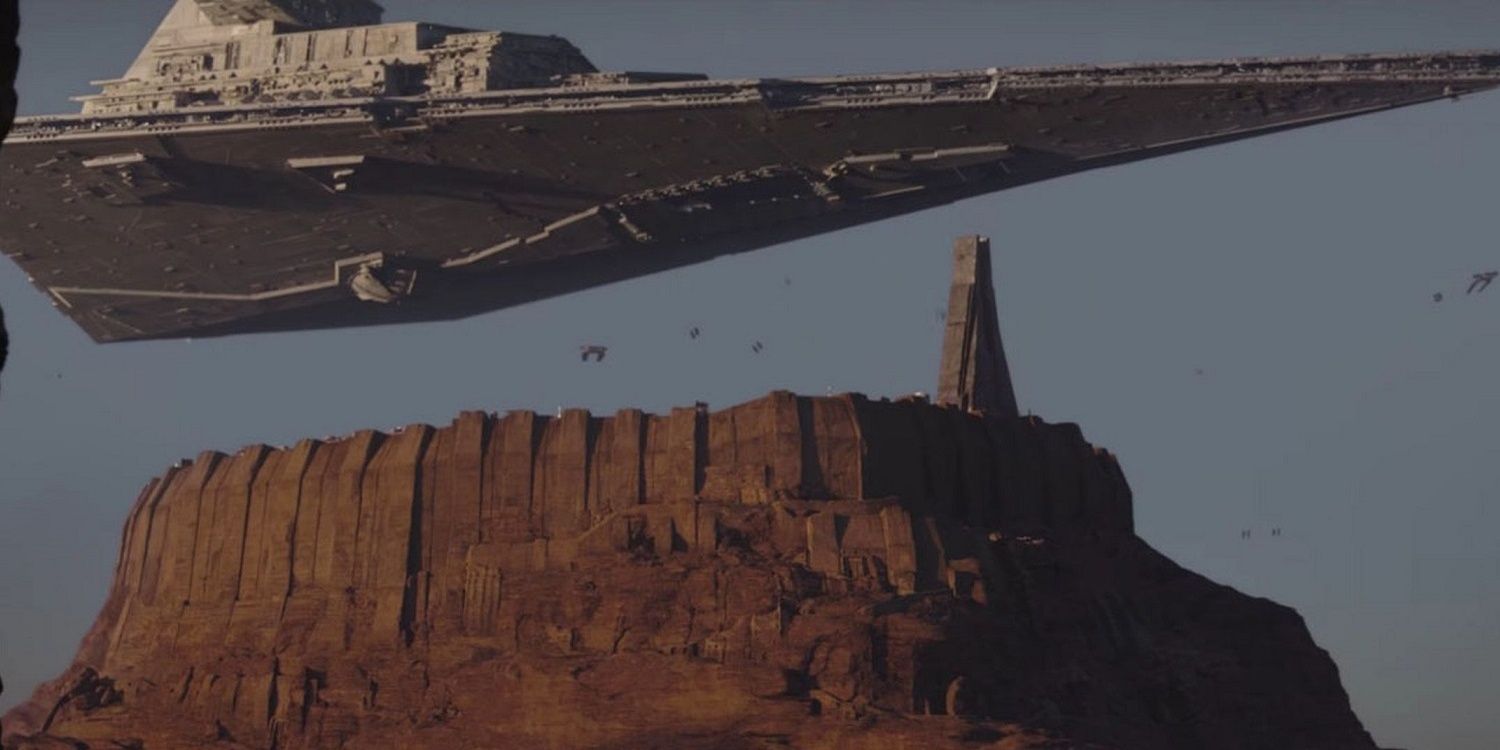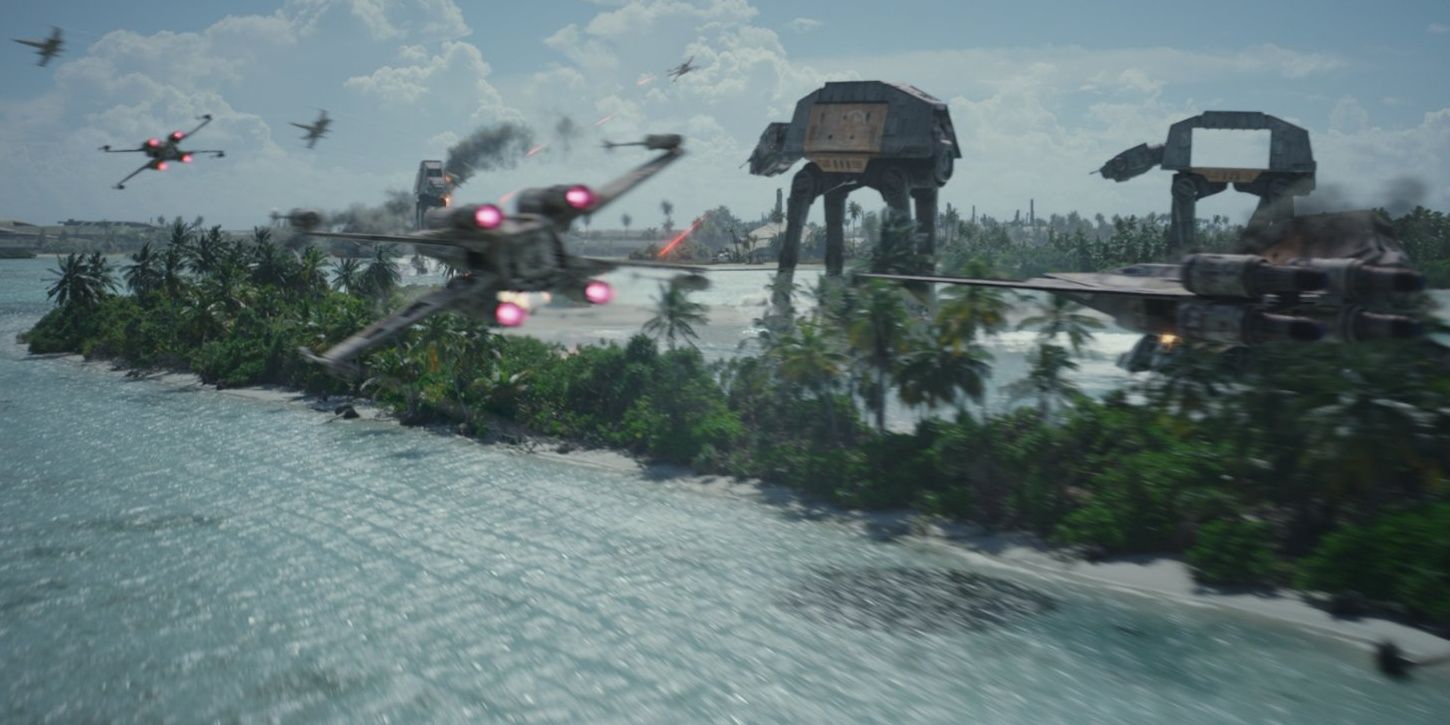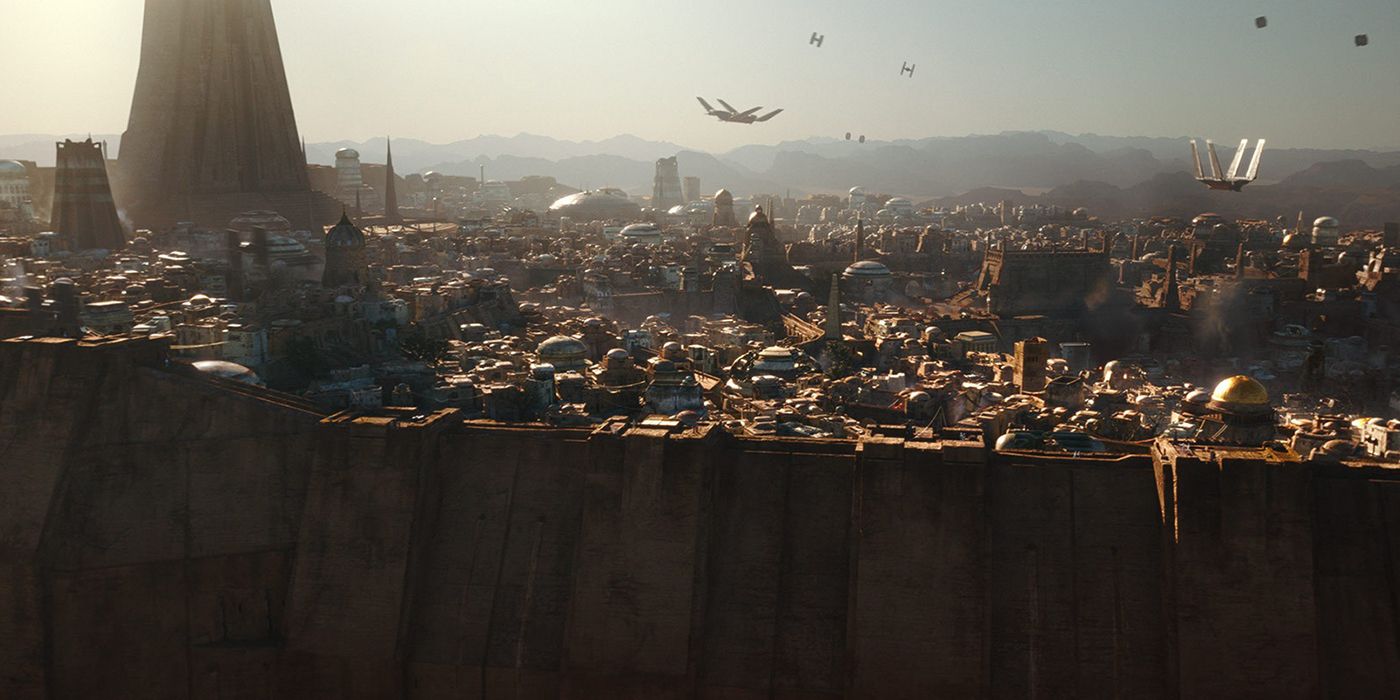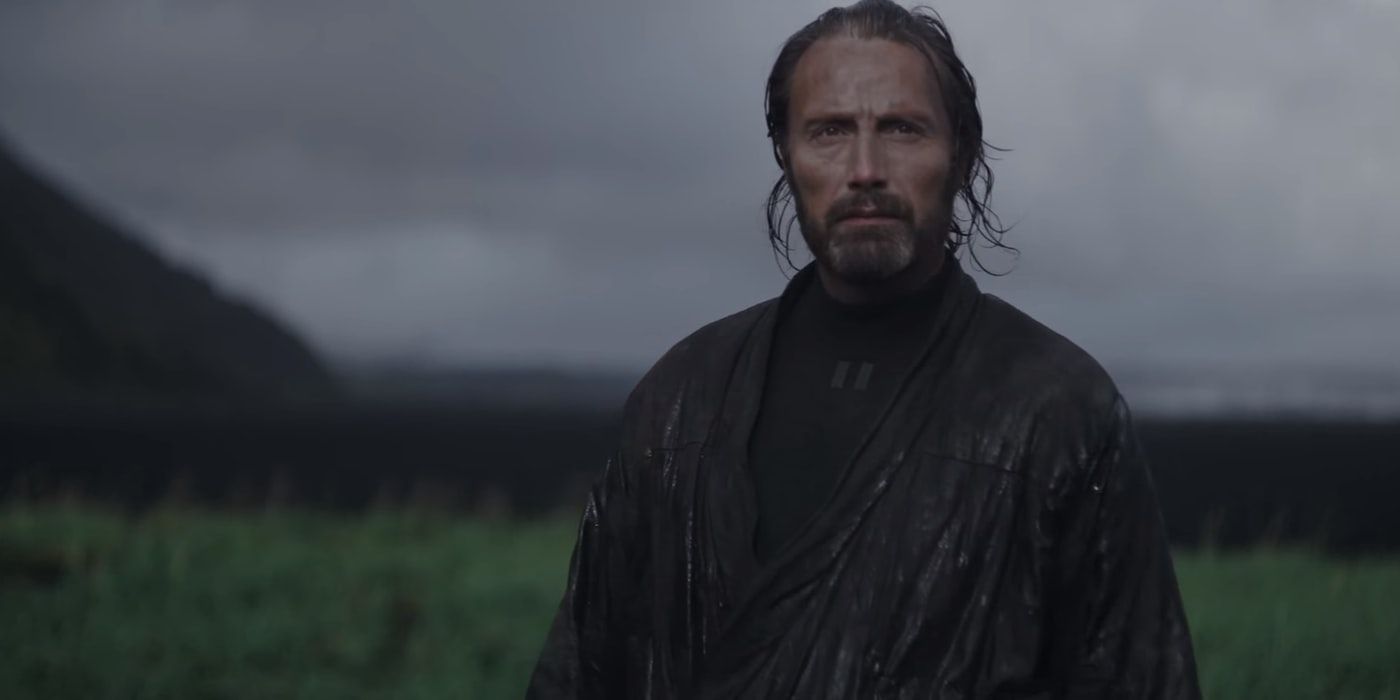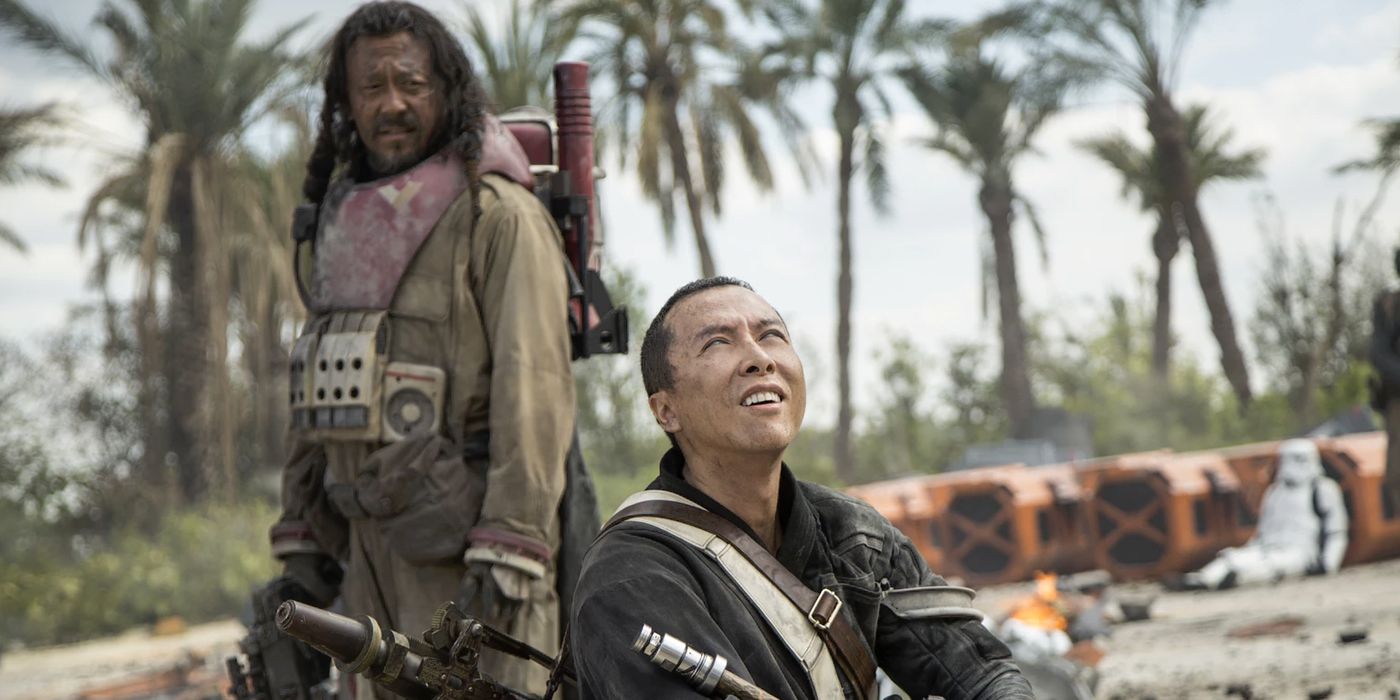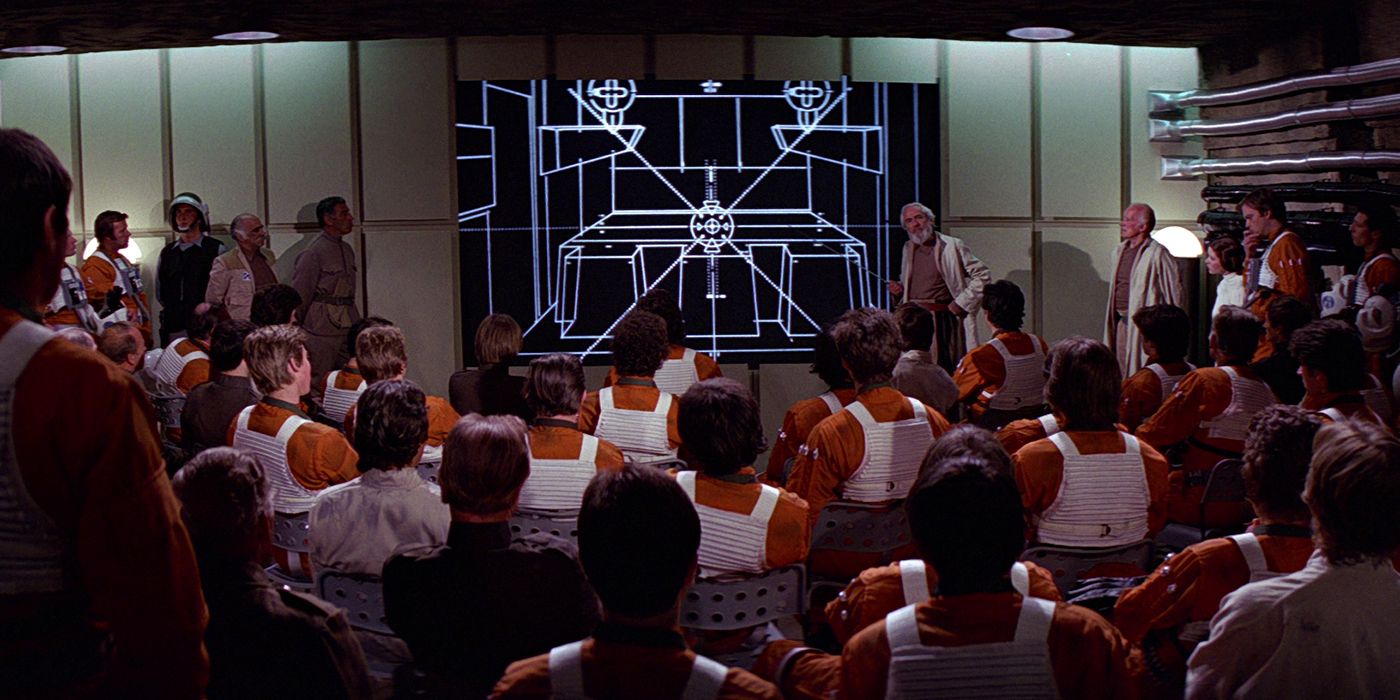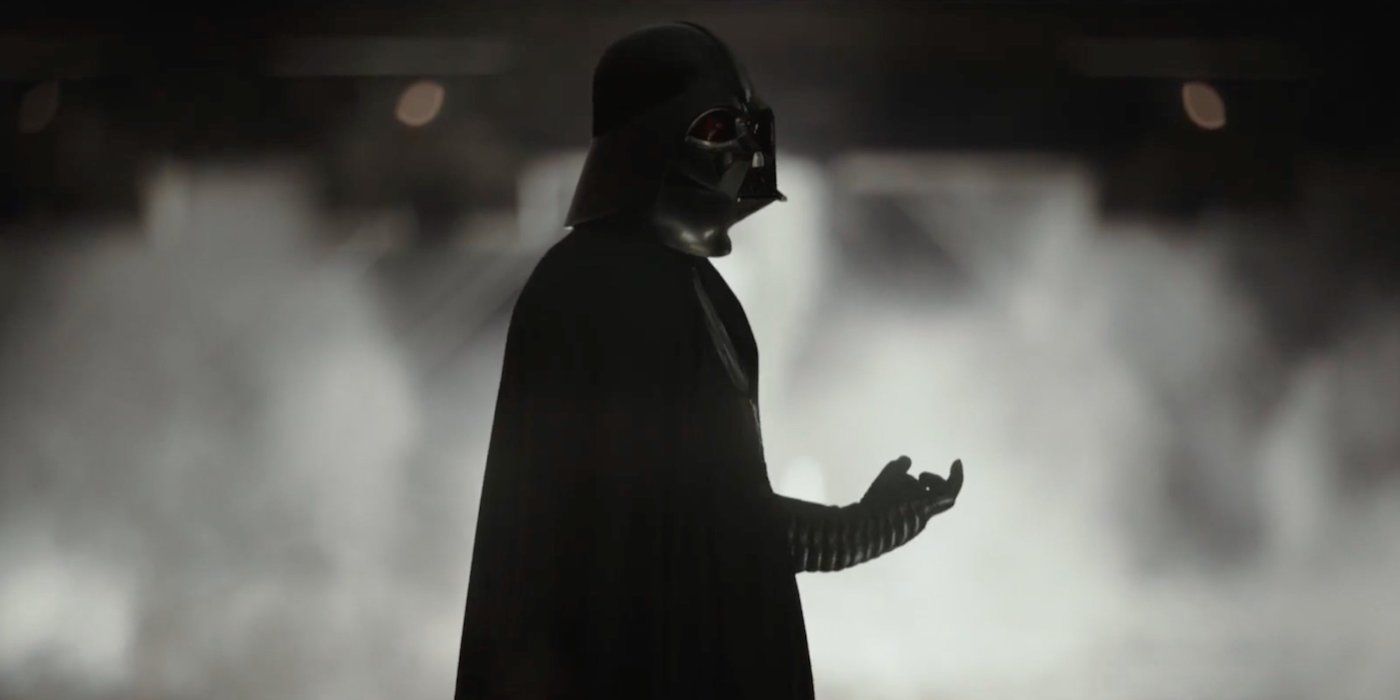Now that we have gotten our first look at "The Last Jedi," we can safely start counting down the days until Christmas. It now seems official that every subsequent "Star Wars" movie looks better than the last. In fact, after "The Force Awakens" restored our faith in the franchise with a healthy mix of the familiar and the new, we were looking forward to the next entry in this expanding universe to keep building on that momentum. "Rogue One: A Star Wars Story" was set to be the first movie outside of the main saga, a standalone feature that focused on a single mission.
RELATED: The Force Awakens: 15 Reasons It's The Worst Star Wars Film
The eighth movie in the franchise and the first of its kind, it would have to prove that there was life beyond the "Episode" movies and pave the way for many more anthology movies to come. Not only did it manage to do just that, it also arguably emerged as the best movie of the franchise to date. We don't know yet how "The Last Jedi" will fare come Christmas, so for now, we will explore 15 reasons why "Rogue One" is the best "Star Wars" movie to this day.
15 NO JEDI
For the very first time in "Star Wars" movie history, the story of "Rogue One" didn't revolve around the Jedi or the Force. Of course, we heard both mentioned quite a few times and we may or may not have seen the Force in action, but there were no Jedi as the main characters of the piece. Instead, we followed a very strong and capable woman as she attempted to fight back against the might of the Empire. This wasn't a quest for destiny -- to become what someone was meant to be -- but rather a far more human story.
This departure from the main storyline of the "Star Wars" movies allowed us to see a more peripheral point of view of the conflict between the Rebellion and the Empire, one that we've been familiar with for decades. "Rogue One's" story was built around events we knew all to well, but it was done in a way that its main characters were detached from those of the main saga. We knew these characters were all a part of the same galaxy and part of the same battle for freedom, but this was a different take on the "Star Wars" formula we had come to know for so many years.
14 INTERESTING NEW CHARACTERS
The "Star Wars" saga has never been short on a large quantity of likable characters, from Luke, Han and Leia to Rey, Finn and Poe. "Rogue One" turned out to be no different. In fact, we were introduced to an entirely new cast, without any support of characters we knew from previous movies. These were new characters developed for this movie and this movie alone, and they were all brought together to turn into a strike team that we were all rooting for.
Reluctant Rebellion fighter Jyn, haunted but deadly Captain Cassian, defector pilot Bodhi, guardians of the Whills Chirrut Imwe and Baze Malbus and K-2SO -- who instantly became everyone's favorite snarky droid -- all carved their spots alongside the most famous and recognizable of "Star Wars" characters. Every one of them had their own past, their own personalities and their own purpose in the story. They only made us wish to see more of them, not only as a team but as separate individuals, considering all of them had very different and fascinating backgrounds.
13 NO LOVE STORY
When both of a movie's main characters -- in this instance Jyn Erso and Cassian Andor -- work so well together, when they have conflicting ideologies that lead them to butt heads and argue, when dark circumstances force them to find common ground and to support each other, when they share a strong bond and a chemistry that translates easily to the screen, it would be extremely easy to pair them together as a couple. And yet, "Rogue One" smartly avoided that pitfall.
Jyn and Cassian were characters in over their heads, fighting for hope in a galaxy at war. Time was never on their side and neither was fate. The movie could have easily found stolen moments that would lead to them falling in love and sharing a kiss, especially near the final minutes of the film, but thankfully that never happened. Instead, our two main characters were companions, brothers-and-sisters-in-arms, brought together by happenstance, fighting for each other and supporting one another, all the way to the bitter end.
12 THE UGLY SIDE OF THE REBELLION
From the start of the original "Star Wars" to the very defeat of the Empire in "Return of The Jedi," the Rebellion were the good guys, decidedly and unequivocally. They were all heroes fighting against the evils of the Emperor and his various minions. But with "Rogue One," we saw a very different kind of Rebellion, one that was still fighting for freedom but going about it in a darker way. As all things in war are, everything was not simply black and white this time around. There were also a lot of grey areas.
Through dialogue, we heard mentions of what some of the more experienced Rebel fighters, as killers and thieves, had had to do in the name of freedom. Seeing things like Cassian sacrificing an ally just so he could make his getaway and hearing a General sanctioning the assassination of an Imperial officer painted a much darker side to the Rebellion, one that we hadn't seen before. In fact, the assassination sanction fueled Cassian's dilemma for a large portion of the movie and it led to Jyn and him arguing about what it means to be a Rebel, something that was important to consider in this darker take on the material.
11 A DIFFERENT FORMAT
“A long time ago, in a galaxy far, far away...” That's the way every "Star Wars" movie has started, and rightfully so. But when fans came to expect the title "Star Wars" to appear with the classic chills-inducing music, instead they were led to a very different start to "Rogue One." In fact, the movie started with something that we had never seen before in a "Star Wars" film: a flashback. This prologue scene, set in the past, introduced viewers to main character Jyn Erso as a child, her father Galen and the man who destroyed their family, Director Orson Krennic.
This extended sequence gave us insight and worked as its own kind of opening crawl, only one that would rather show us than tell us. It gave weight to the story and a shared past between Jyn and Director Krennic that fueled these characters. Plainly, it took the time to establish background, something the "Star Wars" movies never have time to do. The movie's format was also changed when it came to visiting other planets, where their names were actively written on the screen. This also helped set "Rogue One" apart as a different type of entry in the saga, one that was more tactical in its approach.
10 CINEMATOGRAPHY
From the opening shots on the planet Lah'mu, it was clear that this movie was filmed in a much different way than any "Star Wars" film that came before it. Gone were the clear, bright imagery. The crisp and clean format established in the other movies were replaced by much darker tones, scenes rendered through filters that only highlighted certain colors like the green of the grass, the greys of the Imperial officer uniforms and the black armors of the Deathtroopers.
But director Gareth Edwards not only brought his darker approach to filmmaking in "Rogue One," he also brought his striking imagery, a flair for the iconic that sold us on the look of the movie from our first look at the trailers. The composition of the shots, as well as the clash and highlight of colors, set this movie apart from the rest as a more carefully visually constructed movie. Maybe it was because this movie was allowed to approach things differently compared to the regular "Episodes," but we are glad "Rogue One" got to have its very own visual language.
9 A DARKER, GRITTIER TONE
From the getgo, Rogue One set itself apart with a darker, dirtier and much grittier tone. Beforehand, "The Empire Strikes Back" was the pinnacle of darkness for the "Star Wars" saga. We saw the Empire return with a vengeance and cause a lot of heartache for our heroes in a movie much darker than its predecessor. But with "Rogue One," the dark factor got turned up to 11. We saw a true galaxy at war, with factions committing heinous acts on either side of the conflict.
A visit to Jedha showed us resistance fighter Saw Gerrera and his band of fanatic freedom fighters -- characters on the side of good, but who acted even worse than the Rebellion. They didn't care who they hurt or who was caught in the crossfire as long as they got their results. Bombs and blasters rang louder, and they led to more casualties than we expected. People screamed and children cried in the streets. Things were a lot less clean this time around. Characters were wet from the rain, uniforms were dirty and sweaty. Ships crashed beyond repair. And people died. This wasn't your usual "Star Wars." This was guerrilla warfare.
8 FIXES THE DEATH STAR PROBLEM
One of the glaring problems of the original "Star Wars" movie was the plothole that was the destruction of the Death Star. A single hit, carefully placed, would lead to the utter destruction of the planet-sized battle station. As far as evil plans go, that seemed like quite an omission from the Empire, to allow such a fatal design flaw into their ultimate weapon of destruction. Thankfully, "Rogue One" built its entire story around that exact notion.
As a reluctant science officer for the Empire, Jyn's father Galen Erso designed the Death Star and built in that small flaw, a fail-safe to bring the entire thing crumbling down as a means to his revenge. As far as retcons go, this is a massively big one, yet one that works incredibly well. Instead of being all but ignored, an entire movie is made out of this plothole and it works to fix one of the original series' main problems. Not only that, it also builds it into a very emotional and personal story of a man, a father, and the family he lost to the Empire.
7 THE EMPIRE
In "The Empire Strikes Back," the Empire lost a bit of the cartoonish aspects that portrayed them as thinly threatening compared to "A New Hope." But the bulk of that was carried by Darth Vader himself and the employ of famed bounty hunter Boba Fett. Officers were only shown giving commands in their Star Destroyers and Stormtroopers were never proven to be very efficient – nothing more than canon (bantha) fodder that never really managed to hit any target they shot at.
In "Rogue One," not only did we see the return of Grand Moff Tarkin as a strong, devious and opportunist leadership figure for the Empire, we also saw the grounded side of things with Director Krennic. In his quest for power and recognition, Krennic was ruthless. He didn't hesitate to have Jyn's mother killed, or to order the death of Galen's entire engineering team as punishment for his betrayal. And this time around, the Stormtroopers found their marks and, though many of them did die, they did manage to take a whole lot of rebels along with them.
6 PUTTING THE “WAR” IN STAR WARS
Rogue One's entire story was built around a single mission. With the goal to steal the plans of the Death Star on the planet Scarif, we got to see an even more militaristic approach to the Rebellion. The fact that Jyn and her team initially acted against their orders just added more weight to the proceedings and made this a true tale of valor and heroism. These were soldiers, soldiers who were willing to go behind enemy lines, to fight the fight no one believed in, just to give hope to the galaxy.
The fights occurred on true battlefields, with soldiers laying their lives on the line for their causes. This aspect was never highlighted more than in the number of casualties, on either side of the conflict, come the final act of the movie. This was a war movie that saw plenty of loss and heroic sacrifices. There were consequences in actions and no magical plot armor. Whether it was in space or down on the ground, this was a war unlike any we had seen before in the "Star Wars" movies.
5 EXPANSION OF THE GALAXY
Any "Star Wars" movie has never been short on exotic planets and locations. Each movie featured a healthy mix of planets and destinations fans were familiar with combined with new locations that served to expand the galaxy. "Rogue One" not only delivered on that front by taking us to the classic Yavin IV moon and the new tropical planet Scarif, it also managed to double down on it by offering us glimpses at places that had more importance to the overall mythology of the universe.
Starting with a long sequence on the moon of Jedha, we finally saw one of the homes of the Jedi and glimpsed their temples. Fallen statues and relics of a once proud order were sights to behold, that screamed volumes about the past and possibilities that populate this universe. Furthermore, we were also treated to a look at Darth Vader's very own home on a suspiciously unnamed planet. Vader's castle was something that fans everywhere had waited a long time to see and that brief scene went a long way into mystifying the character once again.
4 JYN AND HER FATHER'S STORY
At the heart of every "Star Wars" movie, there was a Skywalker. It's a saga mainly about one family and lineage, about strength of character, sacrifice and heroism. The Skywalkers are a family we've all come to care about and associate with the franchise itself. But "Rogue One" was not about the Skywalkers. Instead, we were introduced to another family in the form of Galen Erso and his daughter Jyn. When Director Krennic killed Jyn's mother, her father surrendered to keep her safe and set the events of the movie in motion.
Secretly reluctant, Galen came to design the Death Star and sent out a message to his daughter to destroy it. And so, parallel to the Skywalker saga, there is now also the Erso saga, the story of a family who lost each other and who traveled across the galaxy to find each other. It's another story about sacrifice, heroism and great loss, maybe even more so than the Skywalkers'. It was a smaller, quieter story, sure, one both inspiring and heartbreaking, but it had large ramifications that, in retrospect, launched Luke Skywalker into his very own story.
3 THE JAW-DROPPING ENDING
"Rogue One" played with our emotions, and they did it so deviously. They played on our prior knowledge of the universe and the format of their movies, as well as what we expect out of them. They gave us new characters to love and root for and they gave them an impossible mission that we knew would turn out successful thanks to the opening crawl text of "A New Hope." Going into this movie, we had every right to expect an exciting story with a formula we were familiar with.
But all of our expectations were turned on their heads when K-2SO, the droid everyone fell in love with, was tragically killed. It was a heavy blow for sure, but we still had many characters to follow around in the final battle. But then things only got progressively worse when the movie went on to kill off its entire cast, one by one, in a sequence that rightfully ripped our hearts out and then proceeded to stump on them repeatedly. It's pretty rare for a movie -- any movie -- to end with all of its main characters dead -- let alone a "Star Wars" film.
2 A NEW HOPE TIES
The fact that "Rogue One" was so strongly tied to the events of "A New Hope" only strengthened the movie itself, all while having it work on its own as a strong solo outing. The movie worked so well because it capitalized on the viewers' knowledge of the "Star Wars" universe to make it a more engaging experience. Something as trivial and taken for granted as the “Death Star plans” is something that fans have been familiar with for the longest time -- they were known to be something that had been successfully stolen.
The success of Jyn and her team's mission was known, but the thrill was in the details. The mission played on the sort of mythical allure that surrounded the plans to the Death Star. We knew they would make it off of Sacrif but, as we saw the signal transmitted to the fleet and subsequently transferred onto a drive that was passed on from Rebel trooper to Rebel trooper, the stakes kept rising and rising. The way the Rebels treated these plans, like something so precious and vital to the freedom of the galaxy and the veritable hope they represented only added to the shock and horror of seeing these Rebels give their lives for something so terribly important.
1 VADER UNLEASHED
Darth Vader appeared in his castle for a brief but crowd-pleasing scene in the middle of the movie that saw him bring back his signature choke-holding trick. While that could have been the end of it, we were given more. So. Much. More. Once our main characters had payed the ultimate price, when the plans were transmitted to the fleet and when we thought the movie was done, Darth Vader emerged from the shadows, lightsaber in hand, slicing his way through Rebel after Rebel in his quest to retrieve the Death Star plans.
This was Vader in a scene we had never seen before: Vader at his best, at his most legendary. From the point of view of the screaming Rebels, we saw him as the movie monster he was always supposed to be. An unstoppable killing machine that let nothing stand in its way. "Rogue One" gave us the Darth Vader we had always wanted to see him, and that in turn helped give new life to the opening moments of "A New Hope." In fact, "Rogue One's" ending was so striking that it changed the way we see the original "Star Wars" movie forever.
Which is your favorite "Star Wars" movie? Be sure to let us know in the comments!

